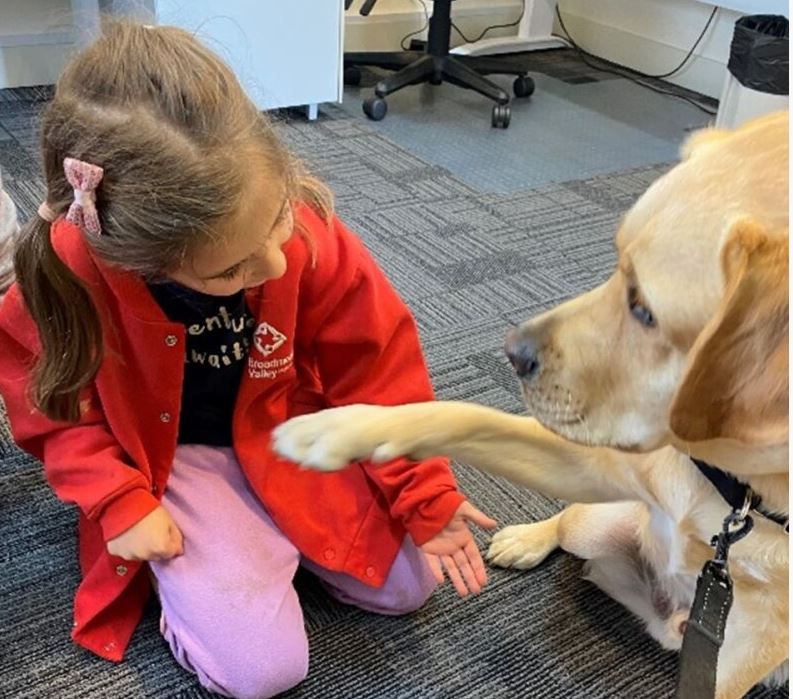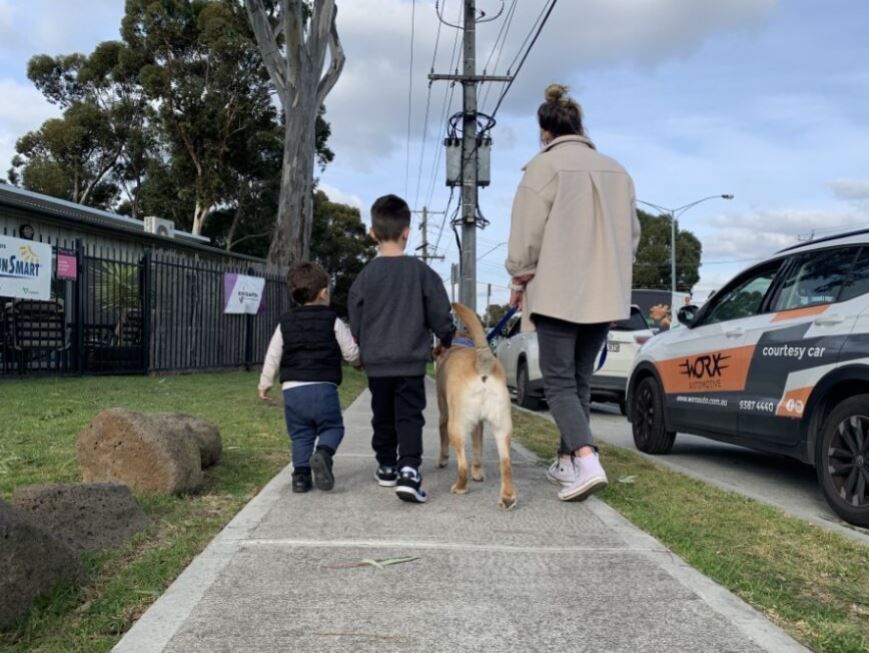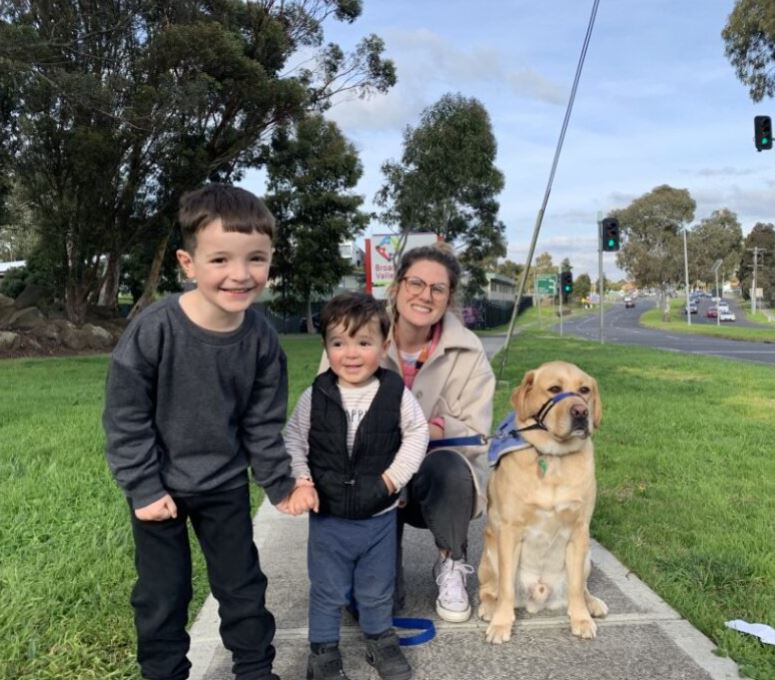
How the new Therapy Dog Program at Broadmeadows Valley is supporting wellbeing and fostering life skills
There is always a buzz in the air when children learn that Gus is visiting at Broadmeadows Valley. Since his introduction to the service earlier this year, the fully certified therapy dog has won the hearts of educators, children, and families.
A Labrador, Gus belongs to Educational Leader Hannah Fruin, who began the therapy dog training program through Lead the Way Institute last year. An AGECS Fellowship Grant funded the initial training and assessment, and in April, Gus and Hannah qualified as a fully certified Visiting Therapy Dog and Handler Team.
Hannah has slowly rolled out the Therapy Dog Program at Broadmeadows Valley to ensure the community feels comfortable with the presence of a dog.
She says families have been very supportive of the program but assures them that anyone who is not comfortable around dogs does not have to interact with Gus.
“My children have always wanted a dog, and it has been great for them to see that a dog needs to be taken care of and that they have needs just like humans. Gus has inspired so much conversation in our home.” Tash, parent
“Both my girls have had the opportunity to be a part of Gus’s journey and learning, and it has made them become more confident with animals, as well as listening to instructions. One of my girls felt confident with Gus to express her emotions and her worries.” Sarah, parent.
“The program so far has involved children being invited to go for walks in the local community with Gus,” Hannah says. “The clear expectations we have set for the children about how we need to behave around Gus have supported children to regulate themselves, as they understand that we need to be calm and gentle around Gus to make sure he is feeling happy when he is with us. For children who need extra support to regulate their emotions, this has been invaluable.”
The program has already shown many benefits to children’s wellbeing and sense of belonging. “Some of our children need lots of support to transition into the service, particularly if their family is being supported by a wraparound service such as domestic violence support or child protection,” Hannah says. “Having Gus there to greet children and walk to their rooms with them means that they can begin their day with us feeling much calmer.”
For other children, it’s the simple joy in asking Gus to ‘sit’, shaking his paw as he offers it, or giving him a treat. “It encourages a reciprocal, respectful relationship, and the positive feeling of being heard, listened to, and valued by a four-legged friend,” Hannah says. “For some of the children in our community, the positive relationship they have with Gus provides some consistency and reliability in their, at times, uncertain lives.”
Children engaging with Gus often share their favourite stories with him and spend time brushing him. “This provides an engaging, sensory moment as they feel his soft coat and see the lines the brush makes in his fur,” Hannah says.
A sign-in display at the entrance to the service tells children if Gus is at the service, or if he is resting at home for the day. “Many of the children who have enjoyed spending time with Gus often ask on the days he does not attend when they will see him next, with a real sense of having something to look forward to,” Hannah says.
“We were going on a walk. He feels good. He feels happy.” Lucas, 4 years old
“Gus likes to eat dog food. Gus can drink water because its healthy for dogs. I’d like to take him camping, go swimming him, be in a tent, play with him, take care of him, I’ll give him water.” Mena, 4 years old.
“Gus is very gentle. I like going for a walk with Gus and giving him a treat.” Lexie, 3 years old.
Later this year, Gus will also provide emotional support for children transitioning to school. “Gus will be available to greet children outside as they arrive and walk with them to the entrance, providing children and families with a friendly familiar face in a new and uncertain environment,” Hannah says. One of the teachers at the neighbouring primary school has even been inspired to investigate the possibility of training his own puppy, with the hope of being able to implement a Therapy Dog Program at the school in future.

